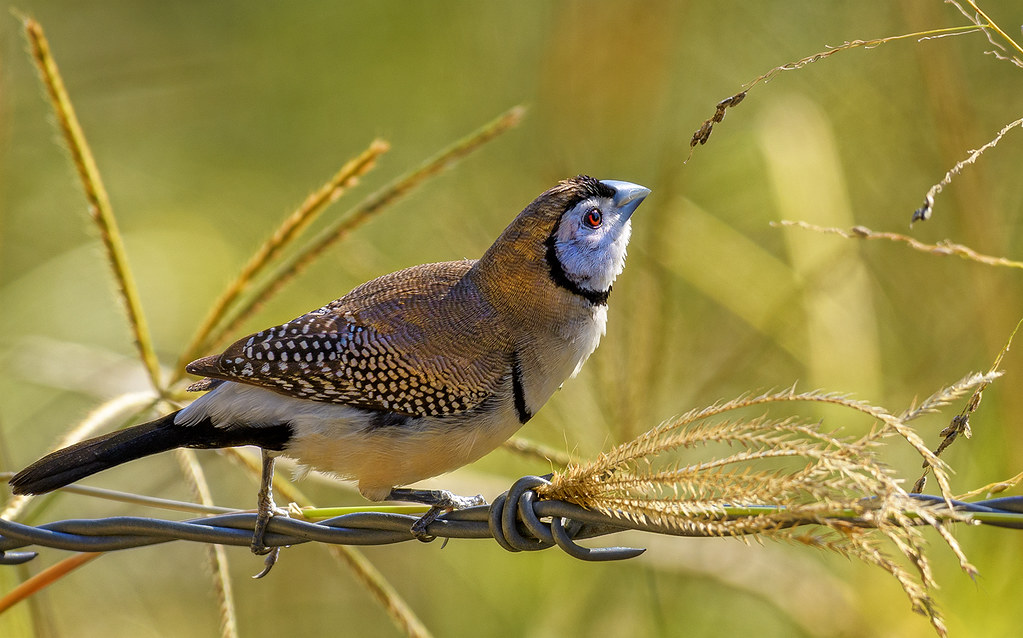#Taeniopygia
Text
Double-barred Finch (Taeniopygia bichenovii)
225 notes
·
View notes
Photo
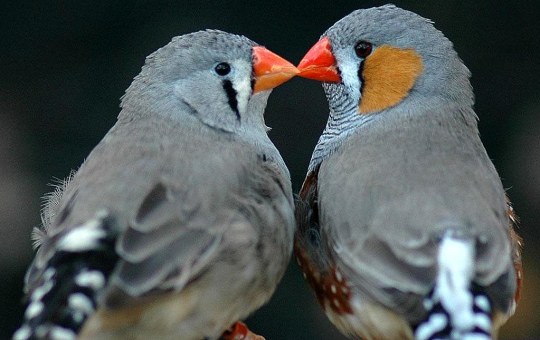
Australian Zebra Finch (Taeniopygia castanotis)
© Birds Aus
202 notes
·
View notes
Photo

Australian Zebra Finch (Taeniopygia castanotis)
© Birds Aus
236 notes
·
View notes
Photo
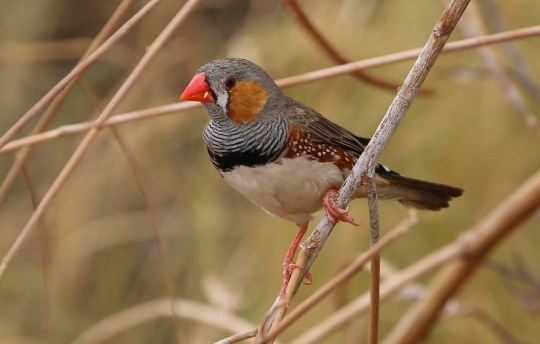
Australian Zebra Finch (Taeniopygia castanotis)
© Richard Collier
50 notes
·
View notes
Text

[ A 50-million-year-old fossilised feather from the Green River Formation in Wyoming. Photo by Tiffany Slater. ]
"Feathers from modern-day birds have more in common with dinosaur feathers than experts previously thought and have a similar protein composition, a new X-ray analysis reveals. The discovery offers new insight into the evolution of feathers over hundreds of millions of years.
Paleontologists examined feathers from three ancient animals, including a 125 million-year-old nonavian dinosaur called Sinornithosaurus found in China; a 125 million-year-old early bird, also from China, known as Confuciusornis; and an unspecified species that lived in what is now the Green River Formation in Wyoming 50 million years ago, according to a study published Sept. 21 in the journal Nature Ecology and Evolution.
After conducting X-ray and infrared light analyses on the ancient feathers, the researchers detected traces of corneous beta-proteins (CBPs), formerly known as beta-keratins, which are proteins necessary for strengthening feathers for flight. The international team of researchers then examined feathers from today's birds, such as zebra finches (Taeniopygia) and noticed that they contained a similar chemical structure."
Read more: "125 million-year-old dinosaur feathers were remarkably similar to modern bird feathers, analysis reveals" by Jennifer Nalewicki.
#palaeoblr#Palaeontology#Paleontology#Fossil#Feathers#Sinornithosaurus#Confuciusornis#Theropod#Dinosaur#Bird#Cretaceous#Mesozoic#Prehistoric#Extinct#Article#Photo#Information
185 notes
·
View notes
Text

The Double-barred Finch (Taeniopygia bichenovii) is an estrildid finch found in dry savannah, tropical dry grassland and shrubland habitats in northern and eastern Australia. Photo: John Cooper.
203 notes
·
View notes
Photo

Animals of the Photo Ark - Australian Zebra Finch (Taeniopygia castanotis)
Family: Estrildid Finch Family (Estrildidae)
IUCN Conservation Status: Least Concern
Note - Male on the left, female on the right.
Named for the black-and-white stripes seen on the necks of males and the tails of both sexes, the Australian Zebra Finch is one of Australia’s most abundant and widely distributed songbirds. Highly gregarious, they typically live in large flocks containing hundreds of individuals, although on occasion they may be spotted alone or in pairs. Australian Zebra Finches are most common in arid inland regions of Australia and rarest near the coast - they are typically found near bodies of water where plants and insects are most abundant. They forage on the ground and feed primarily on fallen seeds, but will also take small insects or pull developing seeds off of plants using their beaks. This species has no specific breeding season, but after forming a pair a male and female will stay together for life and will mate following periods of heavy rainfall. Both parents work to care for the chicks, which develop very quickly (reaching sexual maturity between 70 and 80 days after hatching.)
-----------------------------------------------------------------------------
The photo above is from the National Geographic Photo Ark, and was taken by Joel Sartore. To see more of Sartore’s amazing work and support the Photo Ark, follow the link below:
https://www.nationalgeographic.org/projects/photo-ark/?locale=en
#australian zebra finch#zebra finch#birds#bird#songbirds#australian wildlife#zoology#biology#Ornithology#animal#animals#joel sartore#wildlife
429 notes
·
View notes
Photo
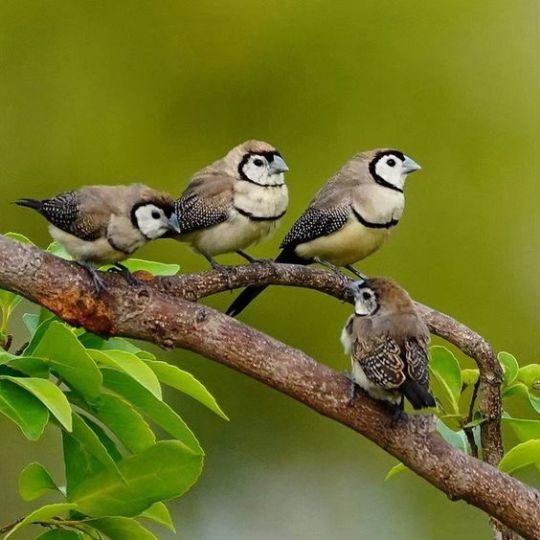
Double-barred Finches (Taeniopygia bichenovii)
📸 @travel_wild_animals
#finch#bird#bird photography#wildlife in australia#birds of australia#wildlife#wildlife photography#australia
7 notes
·
View notes
Text
Terraforming Biodiversity
The seedships that arrived at Alpha Centauri had limited space on board for genetic samples, with parahuman and uplift DNA given the highest priority. The unfortunate result being that the vast majority of Old Terra's rich biodiversity died with that planet, leaving Secland and later terraformed worlds an extremely limited gene pool to work with.
During the terraforming process scientists struggled to fill in the niches left open by a gene bank weighed heavily towards domesticated and laboratory test animals. The possibility of making "downlifted" versions of the uplifted species was proposed but almost universally rejected by the uplifts in question. Instead, the Bureau of Ecosystem Management offered jobs to uplifts filling the ecological roles of their progenitors. This strategy worked surprisingly well, especially with apex predators such as dolphins.
Another approach was to modify the animals they did have using the non-human genes that had been incorporated into parahuman genomes. For instance Secland "bats" are actually heavily modified mice while the procyon is a fox given hand-like paws and a ringed tail.
Late in the terraforming process scientists made a breakthrough that would simplify later efforts. Large complexes of genes that could be activated or deactivated with specific epigenetic triggers were added to the genomes of many species that could produce massive physiological changes in later generations. That way a single breeding colony of ultra-ferrets could give birth to 20-centimeter long mini-ferrets, semi-aquatic ferr-otters, or two-meter mega wolverines as the ecosystem needed.
List of source species:
Mammals:
Cat (Felis catus)
Cattle (Bos taurus)
Dog (Canis lupus familiaris)
Ferret (Mustela furo)
Red fox (Vulpes vulpes)
House mouse (Mus musculus)
European rabbit (Oryctolagus cuniculus)
Sheep (Ovis aries)
Birds:
Budgerigar (Melopsittacus undulatus)
Canary (Serinus canaria)
Chicken (Gallus domesticus)
Rock dove (Columba livia)
Zebra finch (Taeniopygia guttata)
Reptiles:
Green anole (Anolis carolinensis)
Spectacled caiman (Caiman crocodilus)
Fish:
Goldfish (Carassius auratus)
Zebrafish (Danio rerio)
Amphibians:
African clawed frog (Xenopus laevis)
Axolotl (Ambystoma mexicanum)
Bullfrog (Rana catesbeiana)
Tiger salamander (Ambystoma tigrinum)
Arthropods:
Fruit fly (Drosophila melanogaster)
House cricket (Acheta domesticus)
Yellow mealworm beetle (Tenebrio molitor)
2 notes
·
View notes
Text
Genova: sequestrati al porto dall'OIPA 37 uccelli stipati sotto il sedile di un'auto diretta in Marocco

Genova: sequestrati al porto dall'OIPA 37 uccelli stipati sotto il sedile di un'auto diretta in Marocco.
Sequestrati nel porto di Genova dalle guardie zoofile dell’Organizzazione internazionale protezione animali (Oipa) 37 uccelli, 23 diamantini (Taeniopygia guttata) e 14 parrocchetti del Pacifico (Forpus coelestis).
I volatili erano stipati in due piccolissimi trasportini nascosti in due borse di plastica sotto il sedile di un’auto che stava per essere imbarcata nella stiva di una nave diretta a Tangeri, in Marocco.
Chi li deteneva è stato denunciato per maltrattamento (articolo 544 ter del Codice penale).
«Ci ha chiamati la Guardia costiera, che si è trovata di fronte a tale scempio», racconta Giuliana Luppi, coordinatrice delle guardie zoofile Oipa di Genova e provincia. «L’auto proveniva da Torino ed è un miracolo che abbiamo trovato i poveri uccelli ancora vivi. Li aspettava una traversata di 50 ore nella stiva, dove le temperature arrivano a essere molto alte. Non sarebbero sopravvissuti. Non avevano a disposizione neppure un beverino con dell’acqua».
L’uomo che li trasportava ha affermato di aver acquistato gli esemplari in un allevamento di Monza e di volerli portare nel suo paese di origine per regalarli dei bambini.
«Le vittime di questa sorta di “tratta” si trovano ora al sicuro in un Centro recupero animali selvatici, una struttura con voliere adatte a far loro vivere una vita dignitosa», spiega Luppi. «È stato davvero penoso vedere la sofferenza di questi poveri animali ed è inspiegabile come l’indagato pensasse di poterli fare arrivare vivi a destinazione».
L’Oipa invita a non ignorare casi di degrado e maltrattamento di cui si sia a conoscenza e di rivolgersi sempre alle sue guardie zoofile che, nel pieno rispetto della privacy, possono intervenire per tutelare gli animali.
Per ulteriori informazioni e per segnalare situazioni sospette o di maltrattamento a Genova e provincia scrivere un’email a [email protected] o andare al sito https://www.guardiezoofile.info/genova e compilare il modulo di segnalazione online.
Per le segnalazioni in tutta Italia: https://www.guardiezoofile.info/nucleiattivi...
#notizie #news #breakingnews #cronaca #politica #eventi #sport #moda
Read the full article
0 notes
Text
youtube
Watch the American Climate Leadership Awards 2024 now: https://youtu.be/bWiW4Rp8vF0?feature=shared
The American Climate Leadership Awards 2024 broadcast recording is now available on ecoAmerica's YouTube channel for viewers to be inspired by active climate leaders. Watch to find out which finalist received the $50,000 grand prize! Hosted by Vanessa Hauc and featuring Bill McKibben and Katharine Hayhoe!
#ACLA24#ACLA24Leaders#youtube#youtube video#climate leaders#climate solutions#climate action#climate and environment#climate#climate change#climate and health#climate blog#climate justice#climate news#weather and climate#environmental news#environment#environmental awareness#environment and health#environmental#environmental issues#environmental justice#environment protection#environmental health#Youtube
6K notes
·
View notes
Photo

Zebra Finch
223 notes
·
View notes
Text
Колорадские ящерицы заели стресс от шума военной авиации.
зебровые амадины (Taeniopygia guttata), выросшие в условиях шумового загрязнения, хуже учатся пению. А пеночки-теньковки (Phylloscopus collybita), которые живут в аэропортах и постоянно слышат низкочастотный гул самолетов, теряют слух и становятся более агрессивными
https://t.me/open_society_news/7792?single&comment=19500

0 notes
Photo

Sunda Zebra Finch (Taeniopygia guttata)
© Pramana Yuda
33 notes
·
View notes
Text
Horizontal gene transfer (HGT) is the transfer of genetic material between organisms that are not parent and offspring, but rather unrelated organisms. This mechanism of gene transfer has been observed in various species, including bacteria, archaea, and even some eukaryotic organisms.
One of the main problems that HGT poses for neo-Darwinism is that it challenges the traditional view of gene transmission from parent to offspring, which is the cornerstone of the modern synthesis. In neo-Darwinism, genetic variations arise through random mutations and are then subject to natural selection. However, HGT can introduce new genetic material into a population that is not subject to the same selective pressures as traditional genetic mutations. This means that HGT can allow for the rapid spread of advantageous traits through a population, bypassing the slow process of traditional genetic mutations.
Another problem that HGT poses for neo-Darwinism is that it challenges the concept of the tree of life, which is the idea that all living organisms share a common ancestry and have diverged from a single evolutionary lineage. With HGT, genetic material can move horizontally between different evolutionary lineages, leading to the creation of a web of life rather than a simple tree.
Examples of HGT in species include the transfer of antibiotic resistance genes between bacteria, the transfer of virulence factors in bacteria, and the transfer of photosynthetic genes between bacteria and eukaryotes. In plants, HGT has been observed in the transfer of genes between mitochondria and chloroplasts. Additionally, recent studies have suggested that HGT may play a role in the evolution of some animal groups, including sponges and tardigrades.
-Examples
Fish: The genome of the stickleback fish (Gasterosteus aculeatus) has been shown to have acquired genes from other fish species through HGT. One such gene is involved in the regulation of bone formation, and is thought to have been acquired from a species of pufferfish.
Eukaryotic organisms: In some species of green algae, the chloroplast genome has been acquired through HGT from other species of algae. Similarly, some species of fungi have acquired genes from bacteria through HGT.
Birds: A study of the genome of the zebra finch (Taeniopygia guttata) revealed that it had acquired a number of genes through HGT from other bird species. Some of these genes are involved in the regulation of neural development.
sources:
https://bmcevolbiol.biomedcentral.com/articles/10.1186/s12862-015-0451-5
https://genomebiology.biomedcentral.com/articles/10.1186/s13059-015-0621-5
https://www.sciencedirect.com/science/article/pii/S1438422112001943
#evolution #HGT #NeoDarwinism #Darwin #Mutations
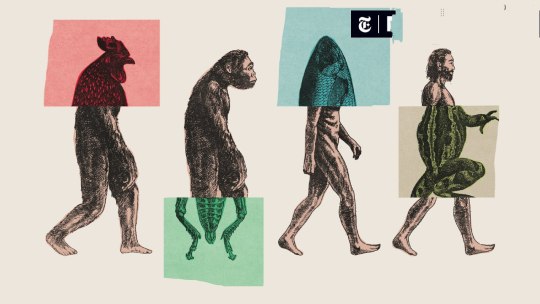
1 note
·
View note
